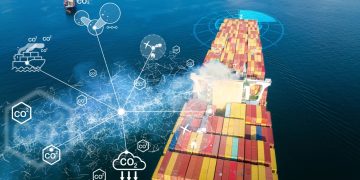A cross-company, cross-discipline group of industry experts led by Grieg Star, has conducted a study involving the potential retrofitting of an open hatch vessel to run on green ammonia. But there are several difficult hurdles to overcome.
Through 2022, the group of industry experts, has studied the possibilities of retrofitting an Open Hatch vessel to run on green ammonia. The study was initiated and facilitated by the Norwegian Green Shipping Programme.
The transformation our industry is grappling with now demands knowledge-sharing and transparency. We hope our findings can help other companies.
…said Managing Director of Grieg Star, Atle Sommer.
“Ammonia as fuel will most likely be a preferred alternative for deepsea shipping to achieve IMOs ambition and the Paris agreement’s targets. As Norway and the Norwegian maritime industry have been a front runner when it comes to battery-powered ships for coastal shipping, we will follow up and be ready for the green shift into deep sea shipping and ammonia as fuel too,” says Narve Mjøs, director of the Green Shipping Programme.
Still, the report also concludes that the main challenge today is the combination of high retrofit investment costs, lack of availability and competitively priced ammonia, and unclear effects of regulatory frameworks.
“The two latter items are the main governing factors for return on a retrofit investment. Without the stability of green ammonia availability/ pricing for the maritime sector (potentially green corridors) and, even more importantly, stable framework conditions, financing such a venture is not viable, even with significant soft project funding,” the report concludes.
“We still see green ammonia as one of many possible fuels for shipping in the future. Currently, it seems more viable for multifuel-ready new buildings than for retrofitting current ships. The study also shows that we need changes on a political and regulatory level to make the change for the existing world fleet,” says Sommer.
In total, 21 entities participated in the study’s five workstreams, with workstream leads from Yara, the Norwegian Maritime Authority, G2 Ocean and Grieg Maritime Group.

































































